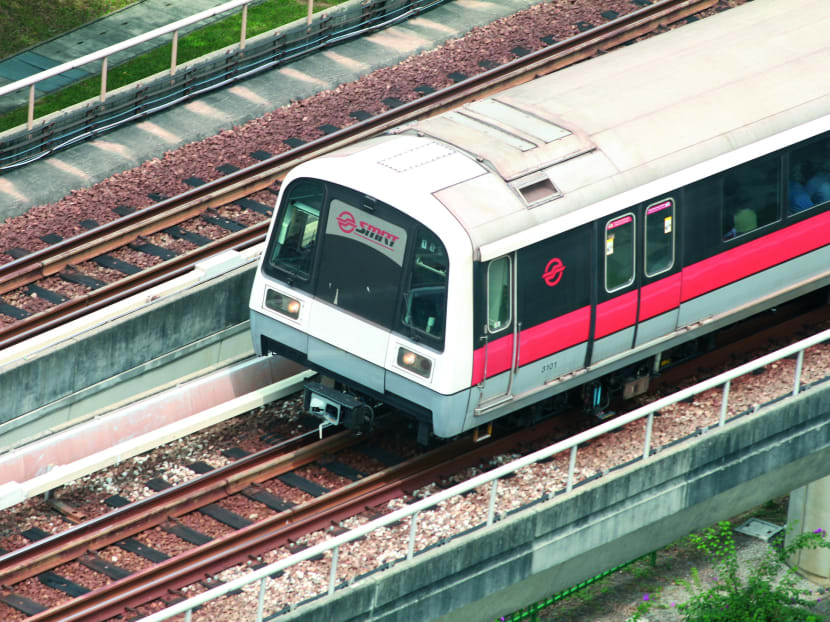SMRT business outlook will improve after selling rail assets to Govt: CEO
SINGAPORE — With its once-lucrative rail business battered by escalating costs, SMRT’s business outlook will improve after it sells its rail assets to the Government, its chief executive Desmond Kuek said yesterday.
SINGAPORE — With its once-lucrative rail business battered by escalating costs, SMRT’s business outlook will improve after it sells its rail assets to the Government, its chief executive Desmond Kuek said yesterday.
However, Mr Kuek, who was speaking at a media briefing on SMRT’s financial results, said he was in the dark on whether the Government would agree to the operator’s proposals — the latest one of which was submitted early last month. On whether there is a time-frame for the Government to give an answer, Mr Kuek said: “I wish I knew.”
He confirmed that SMRT had been in talks with the Government for some time on extending the new rail-financing framework — which was introduced in 2010 and applies to new MRT lines — to existing lines. Under this framework, the Government will pay for and own rail assets on the lines, such as the trains and signalling systems, which will be leased to operators.
This arrangement will, among other things, remove the burden of capital expenditures on asset replacement from the operators, which will focus on other service improvements and maintenance work. SBS Transit’s Downtown Line was the first to be placed under the framework.
Responding to media queries, a Ministry of Transport spokesperson confirmed that it had received SMRT’s latest proposal but said the ministry needed to study it in detail.
“Given that our public transport operators are publicly-listed companies, we are mindful that any decisions on transition for existing lines would need to be carefully considered,” said the spokesperson. “Discussions will take time and need to take into account the operators’ current licence obligations and ownership of operating assets. Transition will only proceed on mutually acceptable terms to both the Government and the operator.”
On Wednesday, SMRT reported a loss of S$25 million on its fare businesses for the financial year ended March 31, dragging down its overall net earnings to an 11-year low of S$61.9 million. The operator incurred about S$650 million in the last financial year on capital expenditures. It expects to spend about the same in the coming year on the purchase of new taxis, replacement of buses, ongoing upgrading of the signalling system and work on the third rail and sleeper replacements.
Mr Kuek said he hoped the Government will respond to SMRT’s proposal as soon as it can. “There is an alignment of interest on both sides ... to try and move towards a transition to the new financing framework as quickly as possible,” he said. However, there are a lot of implementation issues and legalities that need to be worked through, which takes time, he added.
CIRCLE LINE HAS NOT BROKEN EVEN
Mr Kuek revealed that the Circle Line was still in the red. Parts of the line began opening in 2009 and it was fully operational in 2011.
Currently, the Circle Line has an average ridership of about 360,000 per day, below the target ridership. Mr Kuek said that SMRT has had to carry out overhaul work on the line.
“Should the bus contestability framework and the new rail financing framework come about, we should see a much more sustainable business outlook for the company in the future,” he added.
National University of Singapore civil engineering Associate Professor Lee Der Horng said asset replacement could be taxing on the operators as these are “big ticket items”. Should this burden be removed from SMRT, its profits will be dependent on factors such as ridership instead, he noted.
Dr Park Byung Joon, head of the urban transport management programme at SIM University, said moving existing lines under the new framework would be a “fundamental change in the public transport model”, which is probably why the Government is taking a while to respond, he said.
Last Thursday, SMRT shares soared almost 20 per cent as investors speculated that a sale of assets to the Government was imminent.
When asked about the surge in share prices and why the submission of SMRT’s proposal to the Government was not made known to the public earlier, Mr Kuek shot back: “Is that the reason for the share price increase?”
He reiterated that the company did not know “the real reason”. “We don’t know of any material information that we did not previously disclose, that could have led to what happened last Thursday. There is a whole lot of speculation, and we are trying to understand what the activity is about.”







